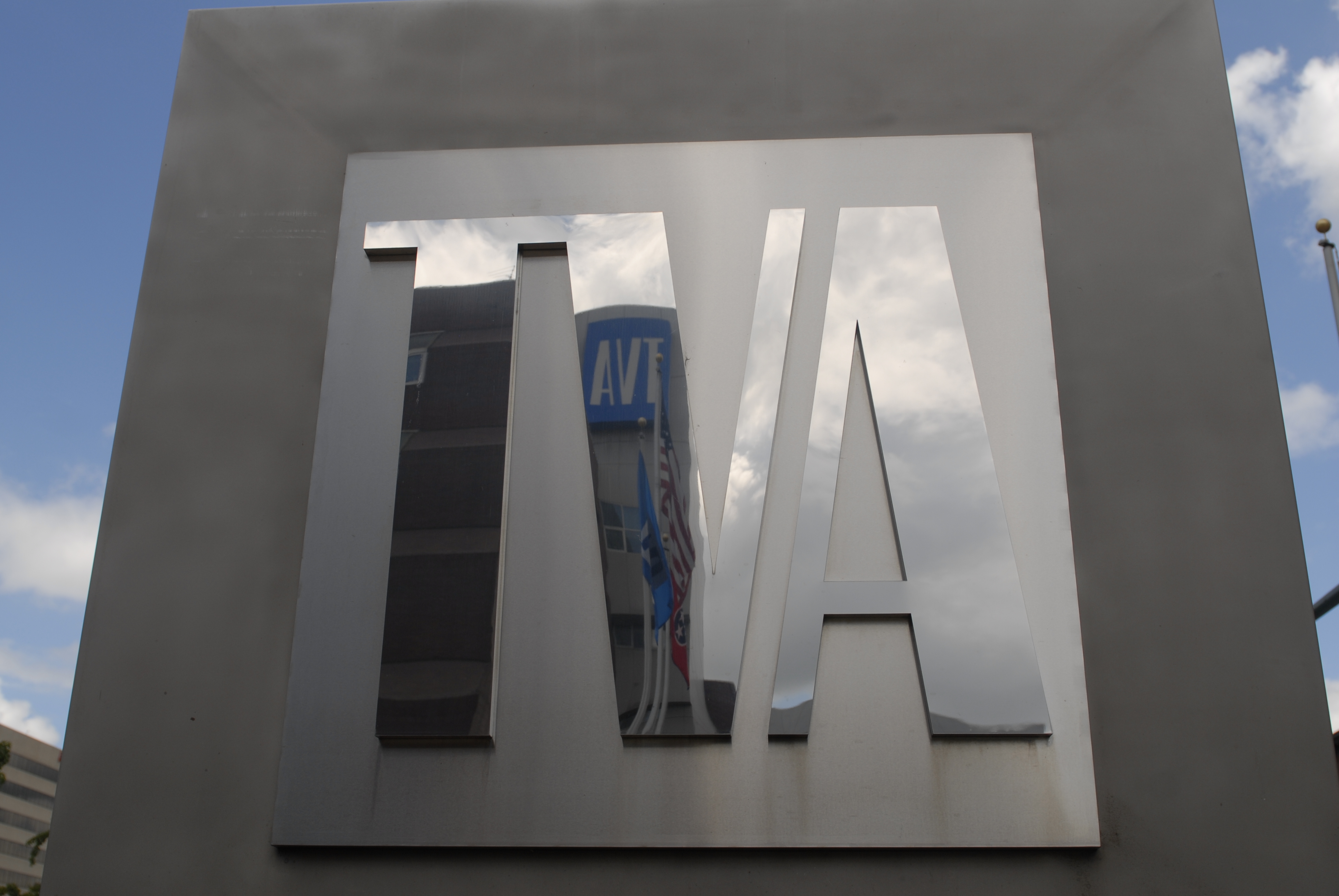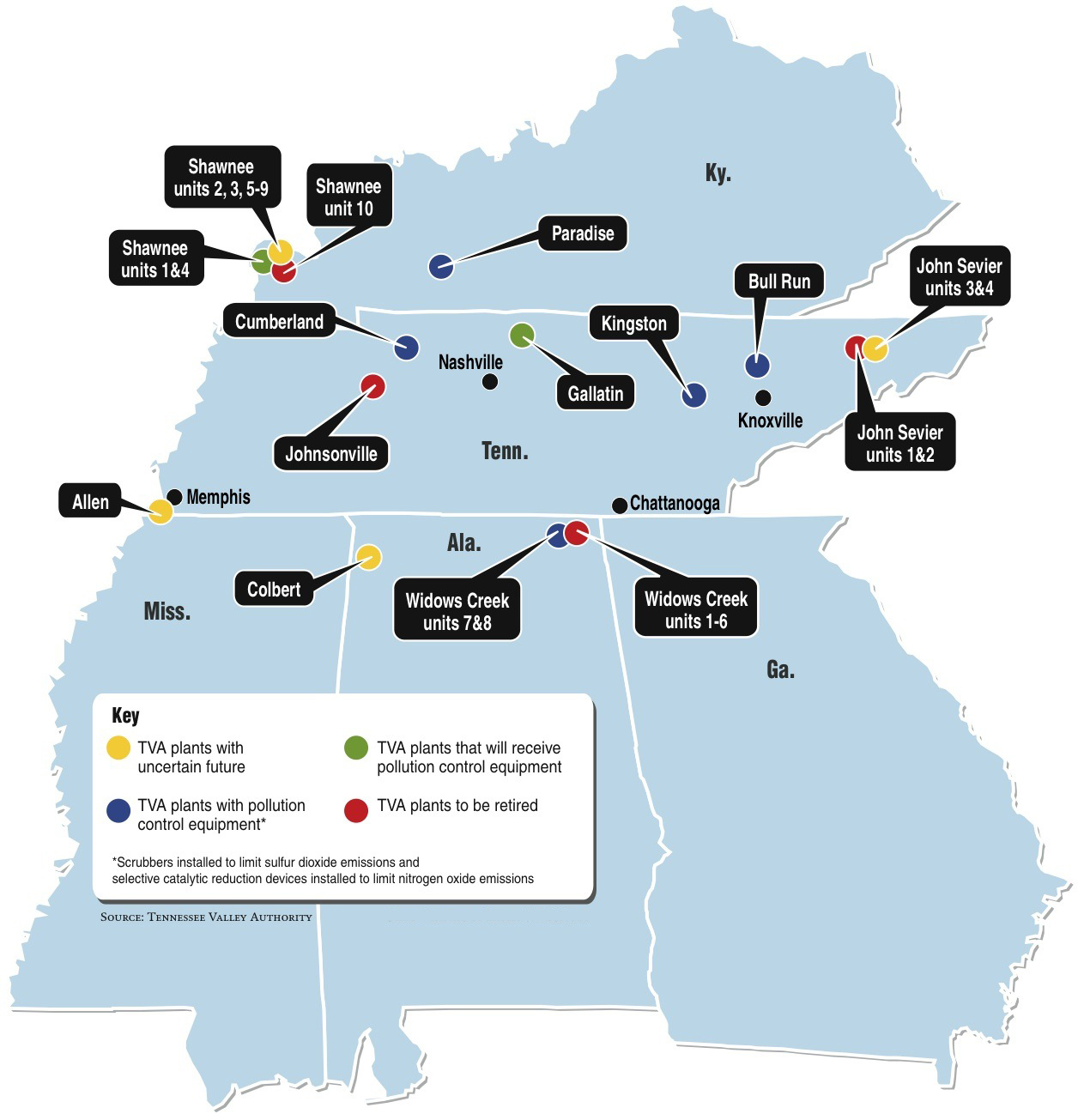VIDEO
This story is featured in today's TimesFreePress newscast.
TVA IDLES FOSSIL UNITS
Among its 59 coal-fired generation units, the Tennessee Valley Authority is retiring 18 of its oldest and least efficient units and is considering whether to shutter or clean up another 14 units.
As the Tennessee Valley Authority retires some of its oldest coal-fired power plants, the agency is trying to entice some of the older workers at its fossil plants to also retire.
TVA spokesman Mike Bradley said Monday the federal utility is talking with employees at TVA's 11 coal plants about a retirement option designed to cut some of the 2,400 jobs in TVA's coal division.
"For environmental and economic reasons, we are making some strategic decisions about idling or retiring some of our coal units," Bradley said. "As we proceed with these idlings across our coal fleet, there are going to be reductions in the number of positions needed."
Bradley said the number and timing of the staff cuts is still being determined and he declined to specify details of any early retirement incentives.
"Even though a lot of these reductions are not scheduled for some time in the future, we wanted to go ahead and put on the table for employees that may be impacted a voluntary reduction-in-force, retirement option," he said. "We're trying to open up positions Valleywide for those employees who may be displaced."
In April 2011, TVA settled a 12-year-old dispute with environmental groups and the U.S. Environmental Protection Agency by agreeing to shutter 18 of its oldest coal-fired generating units and investing up to $5 billion on additional pollution controls at its remaining coal plants.
With cheaper natural gas and less growth in power demand since the settlement was reached, TVA may consider idling even more coal units than it planned three years ago rather than make so many costly investments in pollution controls.
TVA decided in March to spend $1 billion to install scrubbers and selective catalytic reduction devices to limit smog emissions at the Gallatin coal plant near Nashville. But the utility is still studying whether to invest in similar pollution controls or shutter the Colbert plant in Alabama, the Allen plant in Memphis and some of the older units at Shawnee in Kentucky. TVA has already agreed to shut down its oldest units at the Widows Creek, John Sevier and Johnsonville coal plants, although the retirement of some of those units is still up to four years in the future.
TVA has the oldest fleet of coal plants of any major U.S. utility with many plants dating back to the 1940s. Nearly half of TVA's 59 coal units don't have scrubbers and other smog-reduction equipment, although the utility does have controls on most of its biggest generation units.
"TVA has some of the oldest and dirtiest coal plants in the country and there are a lot of good reasons to move beyond coal as an energy source and turn to energy efficiency and renewable energy," said Louise Gorenflo, lead volunteer with Sierra Club's Beyond Coal campaign.
John McFadden, executive director of the Tennessee Environmental Council, said TVA could curb most of its use of coal if homes, appliances and businesses were built to be more energy efficient and the Valley took better advantage of its solar and wind power.
"If we spent half as much on energy efficiency as what we're spending to install scrubbers on the Gallatin plant, we'd save much more power and create many more jobs," he said. "We're putting a Band-Aid on a gunshot wound when we put these scrubbers on these old plants."
But Nancy Gravatt, a senior vice president of the National Mining Association which represents the coal industry, said coal is an essential component of America's energy portfolio.
"Over 40 percent of the electricity generated in this country comes from coal and coal is simply more affordable and reliable than renewable energy sources," she said.
TVA generated more than 60 percent of its electricity from coal 25 years ago when much of its nuclear generation was idled and few natural gas plants were operating in the region. Coal is projected to supply about one-third of TVA's generation in the future.
TVA is preparing to add its seventh reactor to its nuclear power fleet in 2015 when it finishes its Unit 2 reactor at the Watts Bar Nuclear Plant. TVA also has boosted natural gas generation from less than 1 percent in 2007 to more than 20 percent of its power portfolio today.
While TVA turns to other sources of power, TVA's growth in power demand has slowed. The Great Recession, a series of mild winters and increased energy efficiency have actually cut energy consumption in the valley from pre-recession levels.
TVA plans to launch an Integrated Resource Planning process later this year to help offer alternatives for meeting its future power needs.


